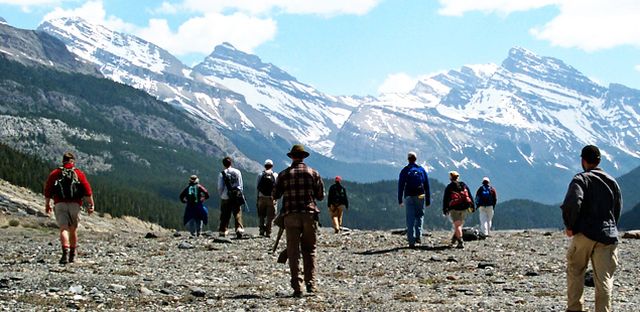
Geology Faculty Publications
A Crustal Cross-Section for a Terrain of Superimposed Shortening and Extension: Ruby Mountains-East Humboldt Range Metamorphic Core Complex, Nevada
Document Type
Book Chapter
Publication Date
1990
Publication Source
Exposed Cross-Sections of the Continental Crust
Abstract
Geologic mapping coupled with geochronological, thermobarometric, and seismic reflection studies provide the data for constructing a crustal cross-section through a Tertiary extensional orogen in the eastern Great Basin, western U.S. Cordillera. Oligocene-Miocene sedimentary and volcanic rocks were deposited during brittle, upper-level crustal extension dominated by high-angle normal faults, rotation of the strata and the faults themselves, and the progressive evolution of a low-angle detachment fault system. Together with nonmetamorphosed to very low-grade rocks of the Cordilleran miogeocline, the synextensional strata comprise an upper crustal suprastructure that was attenuated during Tertiary crustal extension. Structurally below the suprastructure and commonly separated from it by a regional detachment fault is a transitional metasedimentary/granitoid zone which preserves a principally Mesozoic magmatic, metamorphic, and deformational history. In turn, this zone grades downward abruptly into a 1.5- to 2.0-km-thick, upper amphibolite facies Tertiary shear zone that forms the top of a mylonitic to nonmylonitic migmatitic infrastructure of variable age. This infrastructural zone clearly records a complex Mesozoic history, but is in part characterized by a Tertiary magmatic-metamorphic-deformational history that appears to increase in intensity with depth.
Seismic reflection data collected across the Ruby-East Humboldt complex indicate a highly reflective character throughout the crust. Nonetheless, distinct zones of strong seismic reflectivity occur at 4 and 6 s and are interpreted to be zones of intense plastic deformation that probably acted as middle crustal decoupling zones. Middle and lower crustal velocities derived from wide-angle seismic reflection data suggest the presence of mafic rocks interpreted as additions during crustal extension; and these underplated mafic intrusions together with their wallrocks probably experienced granulite facies metamorphism during Cenozoic crustal extension. Taken as a whole, this crustal cross-section suggests that noncoaxial strain was principally partitioned along distinct km-scale extensional shear zones, but when viewed on the scale of the entire middle and lower crust this deformation probably constituted a bulk coaxial strain regime that generated a distinctive crustal extensional metamorphic fabric.
Inclusive pages
103-135
ISBN/ISSN
978-94-010-6788-1
Copyright
Copyright © 1990, Kluwer Academic Publishers
Publisher
Springer
Volume
317
Place of Publication
Netherlands
Peer Reviewed
yes
eCommons Citation
Snoke, Arthur W.; McGrew, Allen J.; Valesek, P. A.; and Smithson, S. B., "A Crustal Cross-Section for a Terrain of Superimposed Shortening and Extension: Ruby Mountains-East Humboldt Range Metamorphic Core Complex, Nevada" (1990). Geology Faculty Publications. 35.
https://ecommons.udayton.edu/geo_fac_pub/35
COinS



Comments
Permission documentation is on file.